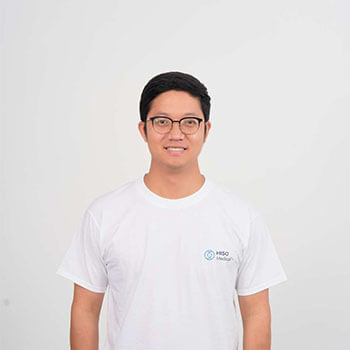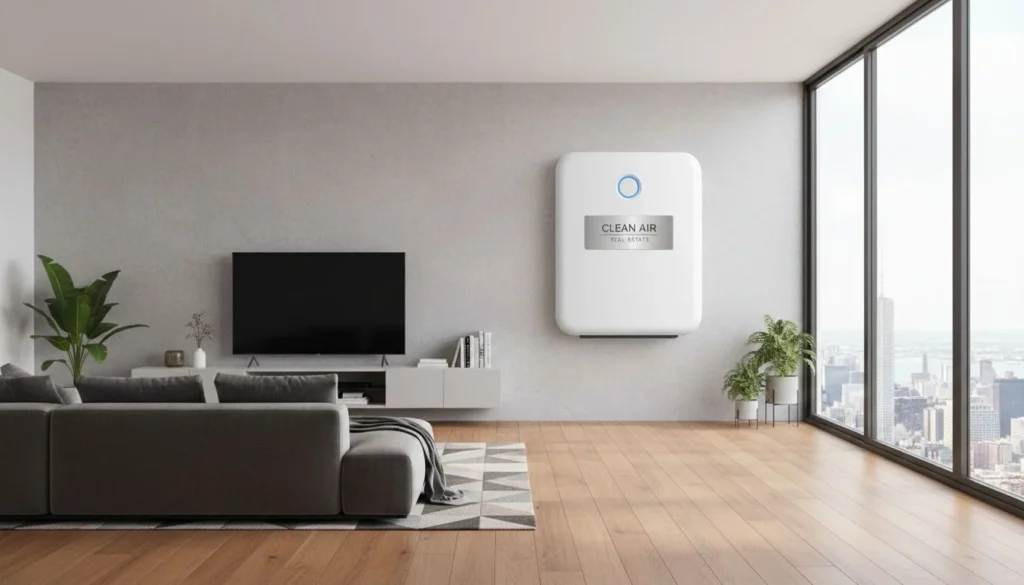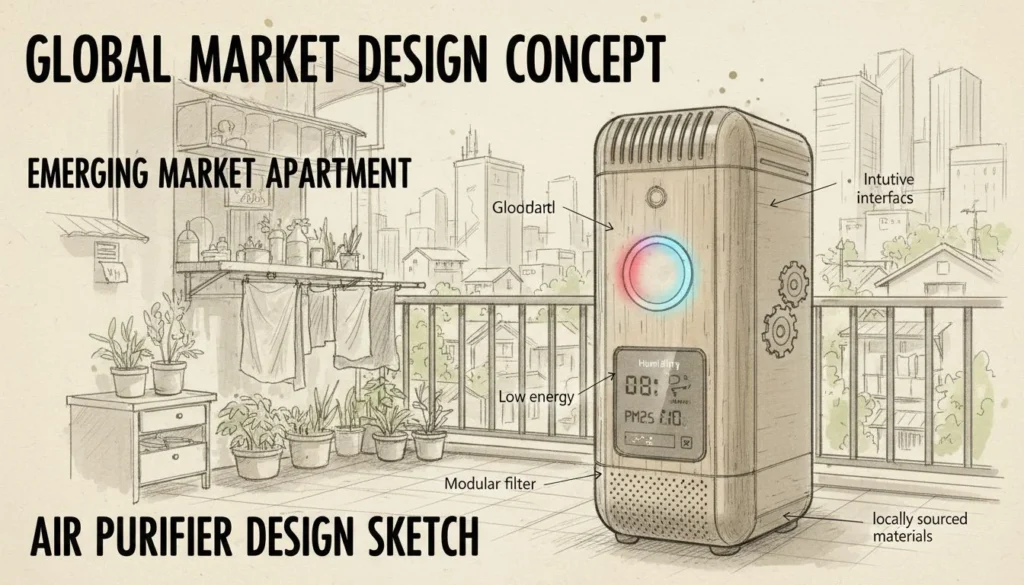
공기청정기가 어디에서 생산되는지 궁금한 적이 있나요? 공기청정기 생산의 매혹적인 세계로 뛰어들어 선두 주자인 중국과 캄보디아를 알아보세요.
현재 중국은 뛰어난 비용 효율성, 생산 능력, 연구 개발 능력을 자랑하며 공기청정기 생산을 선도하고 있습니다. 캄보디아가 대체 생산 허브로 부상하고 있지만, 중국은 이미 구축된 공급망과 기술 발전으로 인해 여전히 우위를 점하고 있습니다.
하지만 표면 아래에는 훨씬 더 많은 것들이 있습니다. 이 급성장하는 산업을 형성하는 복잡한 경제 전략과 시장 동향을 살펴보는 데 동참해 주세요.
중국이 전 세계 공기청정기 생산을 주도하고 있습니다.True
중국은 비용 효율성과 공급망의 강점을 바탕으로 선두를 달리고 있습니다.
중국이 공기청정기 생산에서 우위를 점하는 이유는 무엇일까요?
중국이 공기청정기 생산에서 우위를 점할 수 있었던 것은 비용 효율성과 탄탄한 공급망 인프라에서 비롯된 것입니다.
중국은 낮은 생산 비용, 높은 제조 능력, 첨단 R&D 시설로 인해 공기청정기 생산에 탁월합니다. 중국의 잘 구축된 공급망 네트워크와 전략적 정부 정책은 이 산업에서 중국의 선도적인 입지를 더욱 강화합니다.
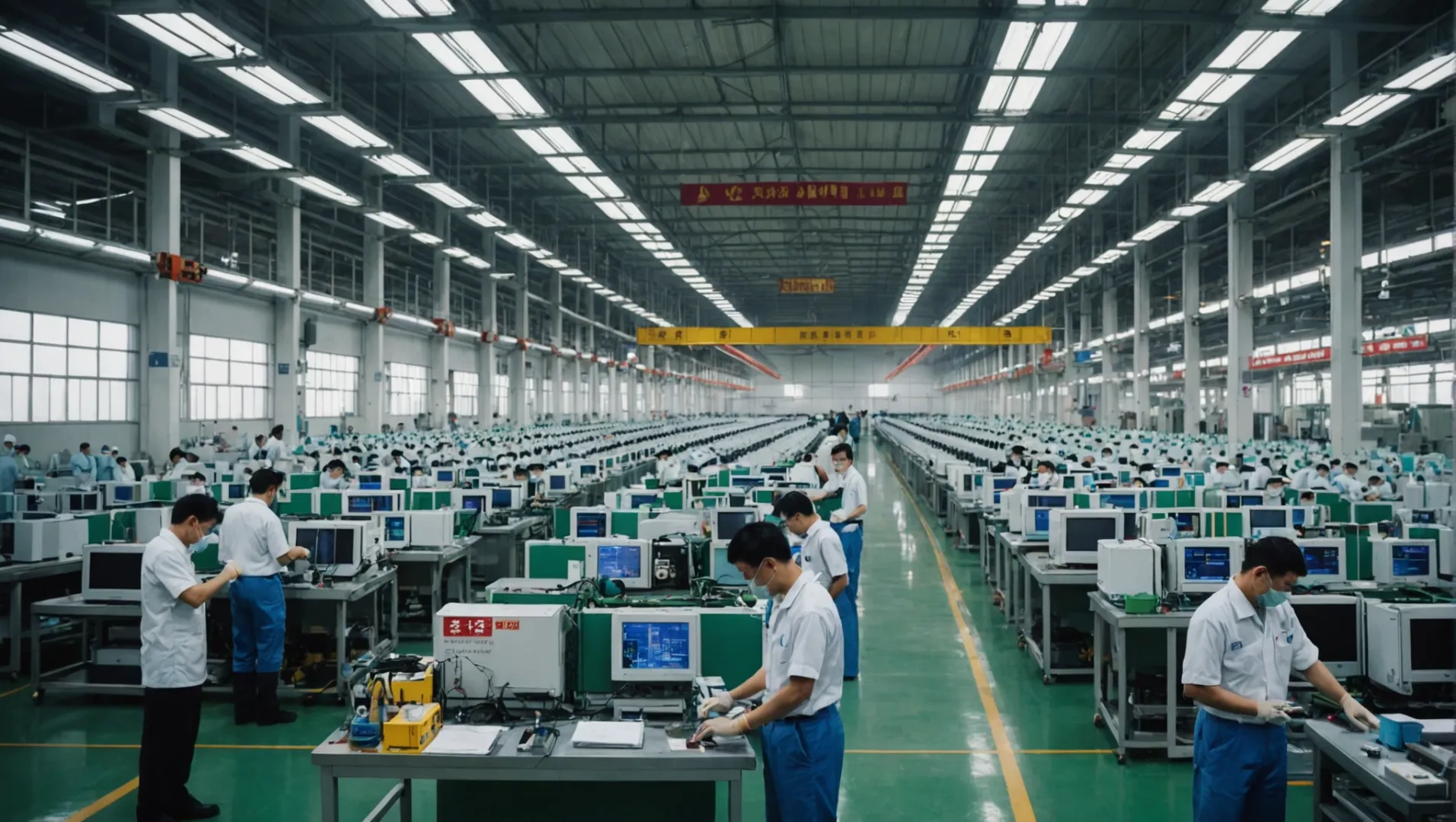
비용 효율성 및 생산 능력
중국은 저렴한 비용으로 공기청정기를 생산할 수 있다는 점이 큰 장점입니다. 중국의 인건비는 상승하고 있지만 서구 국가에 비해 여전히 경쟁력 있는 수준입니다. 또한 중국 제조업의 거대한 규모는 규모의 경제를 실현하여 생산 비용을 더욱 낮출 수 있습니다. 원자재와 부품을 가까운 곳에서 구할 수 있기 때문에 운송 비용이 절감되어 비용 효율성이 향상됩니다.
연구 개발 능력
중국 리더십의 핵심 요소는 다음 사항에 중점을 두고 있다는 점입니다. 연구 및 개발1. 중국 제조업체들은 공기청정기 기술을 혁신하고 개선하기 위해 R&D에 지속적으로 투자하고 있습니다. 이러한 집중은 글로벌 시장의 다양한 요구를 충족하는 보다 효율적이고 효과적인 제품 개발로 이어졌습니다. 개발 HEPA 필터와 첨단 정화 기술은 혁신에 대한 중국의 노력을 잘 보여줍니다.
전략적 공급망 관리
중국의 잘 통합된 공급망 네트워크는 제조업 지배력의 초석입니다. 중국에는 공급업체, 제조업체, 물류업체로 구성된 방대한 네트워크가 원활하게 협력하고 있습니다. 이러한 통합은 리드 타임을 단축하고 생산 프로세스의 유연성을 향상시킵니다. 반면, 캄보디아와 같은 신흥 허브는 아직 공급망 인프라를 개발 중이기 때문에 생산 규모를 확장하는 데 어려움을 겪을 수 있습니다.
정부 지원 및 정책
공기청정기 생산에서 중국의 리더십을 유지하는 데는 정부의 지원 정책이 중요한 역할을 합니다. 중국 정부는 국내 제조를 장려하기 위해 세금 감면, 보조금, 보조금과 같은 인센티브를 제공합니다. 또한 환경 기준을 개선하기 위한 이니셔티브는 국내 공기청정기 수요를 촉진하여 업계 성장에 더욱 활력을 불어넣고 있습니다.
중국은 전략적 이니셔티브를 통해 전 세계 최고의 공기청정기 생산국으로서의 입지를 계속 공고히 하고 있습니다. 그러나 캄보디아와 같은 신흥 경쟁국들이 이 분야에서 진전을 이루면서 환경이 변화하고 있습니다.
중국의 인건비는 서구 국가보다 낮습니다.True
중국은 경쟁력 있는 인건비를 유지하여 비용 효율적인 생산에 도움이 됩니다.
캄보디아는 중국보다 공급망이 더 발달되어 있습니다.False
중국의 공급망은 캄보디아의 개발 중인 인프라와 달리 잘 통합되어 있습니다.
캄보디아는 어떻게 제조 허브로 부상하고 있을까요?
글로벌 제조업 환경이 변화하는 가운데 캄보디아는 핵심 플레이어로 자리매김하기 위해 노력하고 있습니다.
캄보디아는 전략적 위치, 유리한 투자 정책, 경쟁력 있는 인건비로 인해 제조 허브로 부상하고 있습니다. 주요 아시아 시장과 가깝고 중국+1 전략에 부합하는 캄보디아는 사업 다각화를 추구하는 글로벌 기업들의 관심을 끌고 있습니다. 그러나 인프라 및 수입 자재 의존도와 같은 과제는 여전히 남아 있습니다.

전략적 위치 및 근접성
캄보디아의 지리적 이점은 중국과 베트남과 같은 아시아의 주요 제조 대기업과 가깝다는 점입니다. 이러한 지리적 위치는 다음을 구현하고자 하는 기업에게 매우 중요합니다. 중국+1 전략2단일 국가에 대한 과도한 의존으로 인한 위험을 완화하기 위해 중국 이외의 지역에 생산 기지를 설립하여 공급망을 다변화하는 것입니다.
유리한 투자 정책
캄보디아 정부는 세제 혜택과 경제특구를 통해 외국인 직접 투자(FDI)를 적극 장려하고 있습니다. 이러한 정책은 다국적 기업을 유치할 수 있는 비즈니스 친화적인 환경을 조성하기 위해 고안되었습니다. 예를 들어, 정부는 운영 비용 절감을 목표로 하는 기업에게 중요한 세금 공휴일과 면세 수입을 제공하는 경제특구(SEZ)를 설립했습니다.
경쟁력 있는 인건비
캄보디아는 다른 지역에 비해 경쟁력 있는 인건비를 제공합니다. 이러한 비용 효율성은 의류 제조 및 전자제품 조립과 같이 노동 집약적인 공정에 의존하는 산업에 매력적입니다. 젊고 교육 가능한 인력이 풍부하다는 점도 캄보디아의 제조 목적지로서의 매력을 더욱 높여줍니다.
| 요인 | 캄보디아 | 베트남 |
|---|---|---|
| 월 평균 임금(USD) | 190 | 280 |
| 비즈니스 용이성 순위 | 144 | 70 |
인프라 과제
이러한 장점에도 불구하고 캄보디아는 상당한 인프라 문제에 직면해 있습니다. 캄보디아는 도로, 항만, 에너지 공급 시스템을 개선하기 위해 투자하고 있지만 이러한 개발에는 시간과 상당한 투자가 필요합니다. 기업은 비용 절감의 이점과 잠재적인 물류 장애물을 비교 검토해야 합니다.
수입 자료에 대한 의존도
대부분의 원자재와 부품은 여전히 중국에서 주로 수입해야 합니다. 이러한 의존도는 공급망 중단과 관련된 위험을 초래할 수 있습니다. 캄보디아가 제조업 부문을 발전시키면서 수입 의존도를 낮추고 공급망 회복력을 높일 수 있는 현지 공급업체 네트워크를 구축하기 위한 노력이 진행되고 있습니다.
향후 전망
인프라 개발과 정책 개선에 지속적으로 집중한다면 캄보디아는 제조 허브로서의 입지를 강화할 수 있는 잠재력을 가지고 있습니다. 그러나 이러한 기회를 제대로 활용하기 위해서는 기존의 도전 과제를 해결하고 전략적 이점을 활용해야 합니다. 글로벌 기업들이 공급망을 지속적으로 다각화함에 따라 지역 제조 생태계에서 캄보디아의 역할이 크게 성장할 수 있습니다.
캄보디아의 인건비는 베트남보다 저렴합니다.True
캄보디아의 월 평균 임금은 $190으로 베트남의 $280보다 낮습니다.
캄보디아는 제조를 위해 현지 자재에만 의존합니다.False
캄보디아는 대부분의 원자재를 주로 중국에서 수입합니다.
관세가 공기청정기 생산에 어떤 영향을 미치나요?
관세가 전 세계 공기청정기 산업을 재편하고 있으며, 생산 전략과 시장 역학 관계에 영향을 미치고 있습니다.
중국산 제품에 대한 관세로 인해 공기청정기의 생산 비용이 증가하면서 제조업체들은 생산지를 다변화하고 있습니다. 이로 인해 일부 제조업체는 동남아시아에서 대체 생산지를 모색하는 등 공급망에 변화가 생겼습니다.
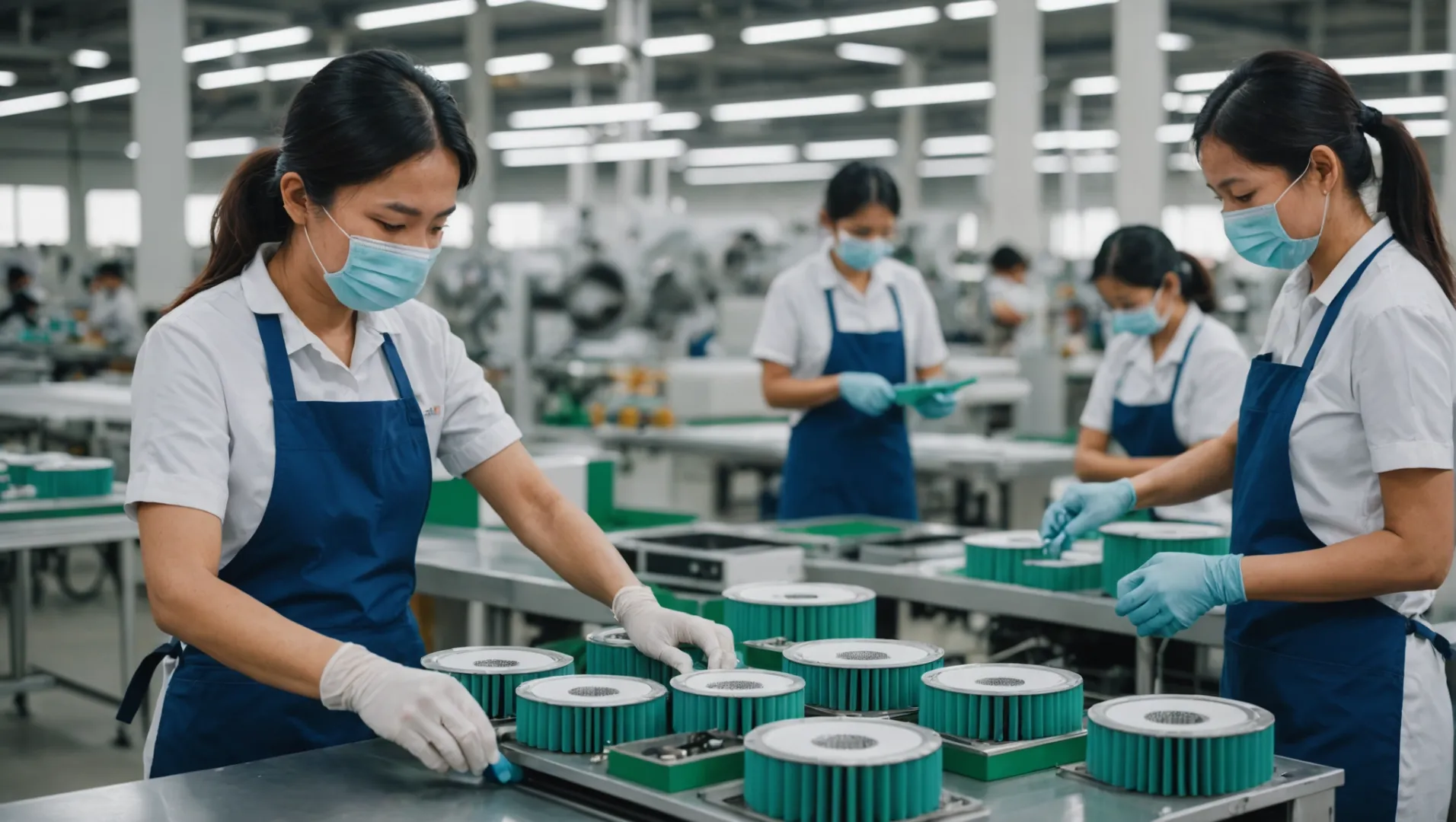
관세가 생산 비용에 미치는 영향 이해하기
특히 미국이 중국산 수입품에 관세를 부과하면서 공기청정기 생산 비용이 크게 증가했습니다. 미국은 이러한 제품의 가장 큰 시장 중 하나이기 때문에 관세로 인한 비용 증가는 제조업체의 가격 전략과 수익성에 직접적인 영향을 미칠 수 있습니다.
이러한 영향을 완화하기 위해 점점 더 많은 기업들이 중국+1 전략3 생산 거점을 다각화하기 위해 노력하고 있습니다. 여기에는 중국에 주요 제조 공장을 유지하면서 베트남이나 태국과 같은 국가에 추가 시설을 설립하는 것이 포함됩니다.
공급망 변화 탐색하기
관세 상황으로 인해 공급망에 대한 재평가가 이루어지고 있습니다. 제조업체들은 중국과 가까운 동남아시아 국가를 중심으로 대체 사업장을 모색하고 있습니다. 이러한 이전은 낮은 인건비를 활용하고 높은 관세율을 피하는 것을 목표로 합니다.
이러한 변화에도 불구하고 여전히 많은 중요한 부품과 원자재가 중국에서 생산되고 있습니다. 이러한 의존도 때문에 제조 위치가 변경되더라도 핵심 공급망 요소는 여전히 중국의 산업 생태계와 얽혀 있습니다.
주요 플레이어의 전략적 대응
몇몇 주요 제조업체는 캄보디아 같은 국가로 생산 기지를 이전하는 방식으로 관세에 대응하고 있습니다. 이러한 국가는 중국과 가깝고 미국과 같은 주요 시장과 유리한 무역 협정을 맺고 있어 전략적 이점을 제공합니다.
자세한 예는 회사에서 관리하는 방식에서 확인할 수 있습니다. R&D 활동4. 공장은 이전할 수 있지만, 연구 개발 노력은 중국에 뿌리를 두고 중국의 첨단 기술 인프라와 전문성을 활용하는 경우가 많습니다. 이를 통해 관세 영향을 전략적으로 탐색하면서 혁신을 지속할 수 있습니다.
관세로 인해 공기청정기 생산 비용이 감소했습니다.False
관세는 생산 비용을 줄인 것이 아니라 오히려 증가시켰습니다.
제조업체는 중국+1 전략을 사용하여 관세를 완화하고 있습니다.True
이 전략에는 관세 영향을 줄이기 위해 중국 이외의 지역으로 생산을 다변화하는 것이 포함됩니다.
'중국+1' 전략이 업계를 재편할까요?
'중국+1' 전략은 글로벌 제조업 트렌드에서 중추적인 역할을 하고 있습니다.
중국을 넘어 생산 다변화를 목표로 하는 '중국+1' 전략은 단일 국가에 대한 과도한 의존으로 인한 위험을 완화하여 산업을 크게 재편하고 있습니다. 이러한 접근 방식은 기업들이 베트남, 태국, 캄보디아 등 새로운 제조 허브를 모색하도록 유도하고 있습니다.
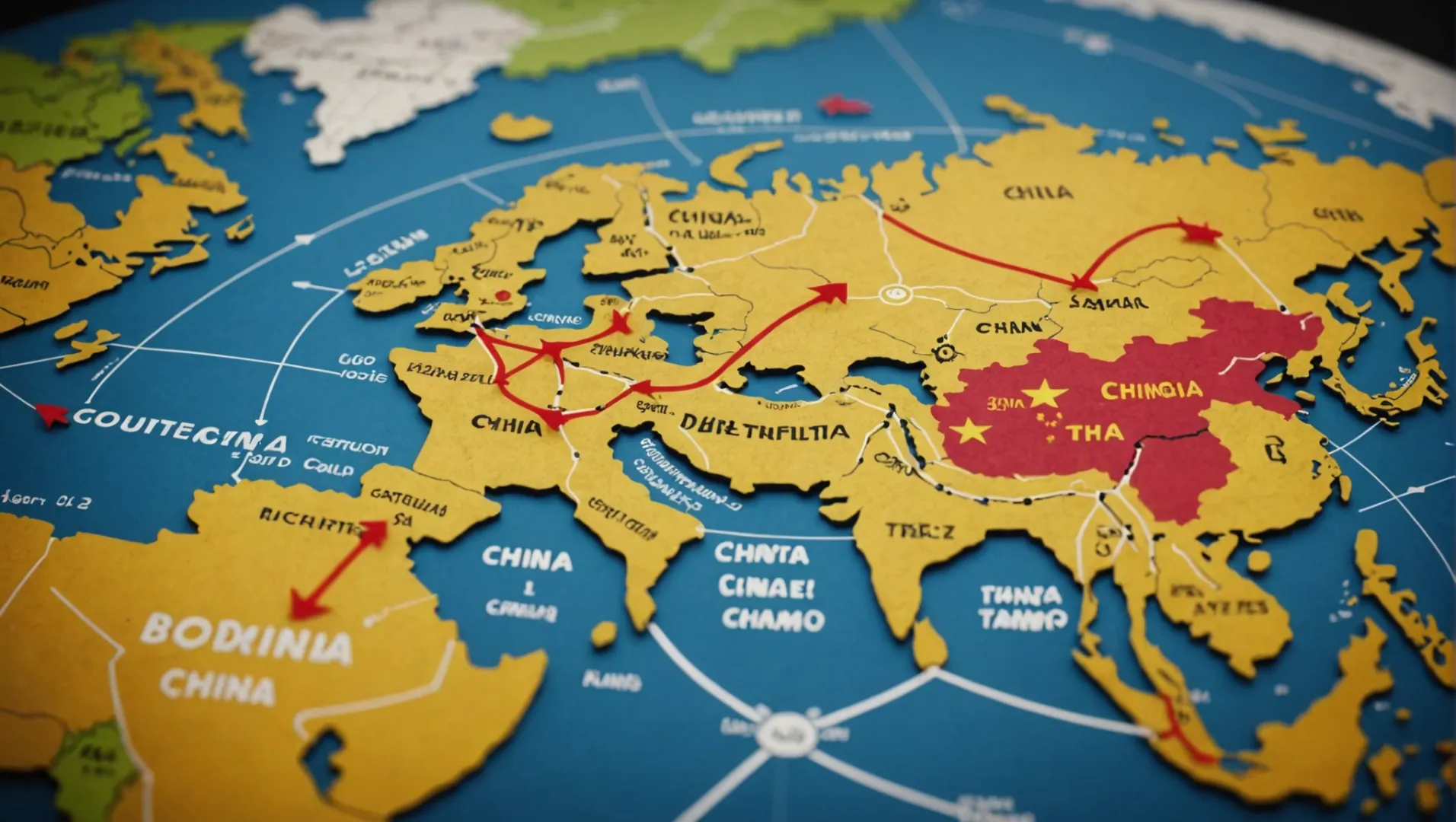
'중국+1' 전략 이해
'중국+1' 전략은 기업이 중국에서 중요한 입지를 유지하면서 생산의 일부를 중국 밖으로 이전하는 것입니다. 이 접근 방식은 주로 공급망을 다변화하고 단일 국가에 대한 의존도를 줄여 관세 영향 및 지정학적 긴장과 같은 위험을 최소화해야 한다는 필요성에 의해 추진됩니다.
전략 추진 요인5
'중국+1' 전략이 채택된 데에는 여러 가지 요인이 있습니다:
- 지정학적 긴장: 관세 및 무역 제한이 부과됨에 따라 많은 기업이 다른 국가로 사업을 확장하여 위험을 완화하려고 합니다.
- 비용 고려 사항: 중국은 비용과 생산 능력 측면에서 경쟁 우위를 가지고 있지만, 인건비 상승으로 인해 기업들은 보다 비용 효율적인 위치를 모색하고 있습니다.
- 공급망 복원력: 생산 위치를 다각화함으로써 기업은 공급망 복원력을 강화하여 혼란 속에서도 비즈니스 연속성을 보장할 수 있습니다.
신흥 제조 허브6
베트남, 캄보디아, 태국과 같은 국가가 매력적인 대안으로 떠오르고 있습니다. 이 국가들은 여러 가지 이점을 제공합니다:
- 중국과의 근접성: 지리적으로 가까워 물류가 효율적이고 중국의 원자재와 부품에 지속적으로 접근할 수 있습니다.
- 유리한 무역 협정: 이들 국가 중 다수는 주요 시장과 유익한 무역 협정을 체결하여 관세를 낮추고 원활한 무역을 촉진하고 있습니다.
산업별 시사점
전자 및 섬유와 같은 산업에서는 '중국+1' 전략이 더욱 두드러집니다. 제조업체들은 탄탄한 기술 생태계를 갖춘 중국에 R&D 및 엔지니어링 기지를 유지하면서 동남아시아에 새로운 공장을 설립하고 있습니다.
도전 과제 및 고려 사항
이 전략은 기회를 제공하지만 동시에 도전 과제를 안겨주기도 합니다:
- 인프라 개발: 신흥 허브에는 중국에서 볼 수 있는 정교한 인프라가 부족하여 상당한 투자가 필요할 수 있습니다.
- 숙련된 인력: 새로운 지역에 숙련된 인력을 구축하는 것은 생산 품질과 효율성을 유지하는 데 매우 중요합니다.
이러한 역학 관계를 이해하면 업계가 글로벌 제조업 변화의 복잡성을 효과적으로 탐색하는 데 도움이 됩니다.
'중국+1' 전략으로 중국에 대한 의존도를 줄입니다.True
이 전략은 생산 다변화를 통해 중국에 대한 의존도를 최소화하는 것을 목표로 합니다.
베트남은 '중국+1' 전략의 핵심 국가입니다.True
베트남은 유리한 조건으로 인해 제조 허브로 부상하고 있습니다.
결론
중국이 여전히 선두를 달리고 있지만, 공기청정기 생산 환경은 진화하고 있습니다. 이러한 트렌드를 주시하는 것은 미래의 기회를 잡기 위해 필수적입니다.
-
중국의 혁신적인 공기청정기 기술 발전을 살펴보세요..: 중국의 공기청정기 시장 보급률은 2% 미만으로 전 세계 평균보다 훨씬 뒤처져 있습니다. 유럽에서는 40%에 달합니다. ↩
-
캄보디아의 제조업 성장을 이끄는 전략적 접근 방식을 이해합니다: 플러스 원 또는 C+1이라고도 하는 중국 플러스 원 전략은 기업이 공급망을 최소화하도록 장려하는 공급망 전략입니다.... ↩
-
관세를 완화하기 위해 중국 이외의 지역으로 생산을 다변화하는 기업의 사례를 살펴보세요: 중국 공기청정기 시장 규모는 2023년 25억 8,000만 달러로 추정되며 2024년부터 2030년까지 연평균 7.61% 성장할 것으로 예상됩니다. ↩
-
제조업의 변화에도 불구하고 R&D가 중국에 고정되어 있는 이유를 알아보십시오: 실내 여과는 PM2.5의 실내 농도를 효과적으로 줄여 인체 노출을 줄일 수 있습니다(Bard et al., 2019, Barn et ... ↩
-
기업이 중국에서 생산을 이전하는 이유 살펴보기: 차이나 플러스 원을 채택하면 경쟁력 있는 인건비, 유리한 환율, 세금 인센티브 등 다양한 이점을 누릴 수 있습니다. ↩
-
동남아시아의 신흥 제조 허브에 대해 알아보기: 최근 몇 달 동안 언론의 관심은 차이나 플러스 원 전략의 유력한 경쟁자인 인도와 베트남으로 점점 더 쏠리고 있습니다. ↩

